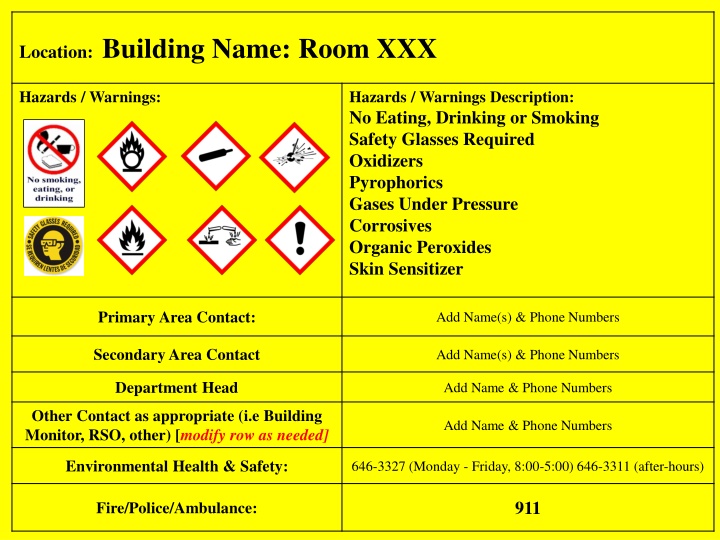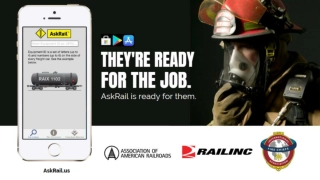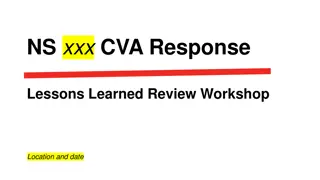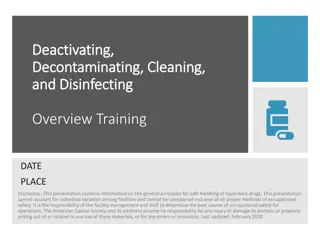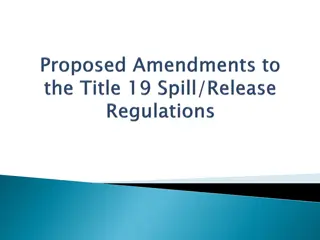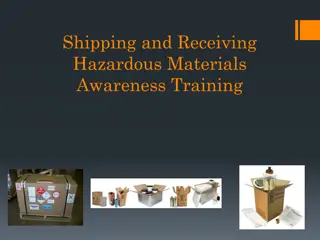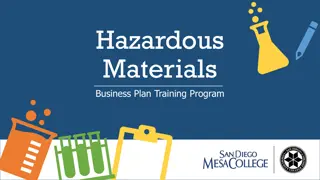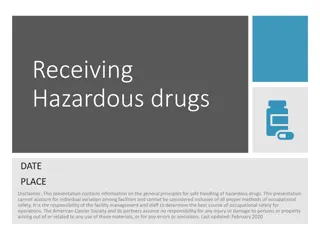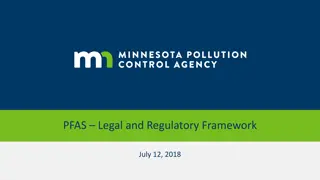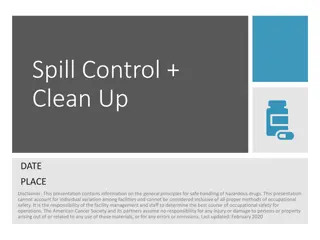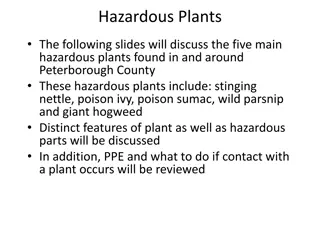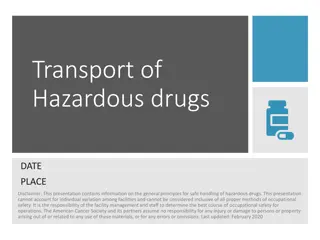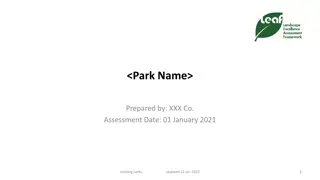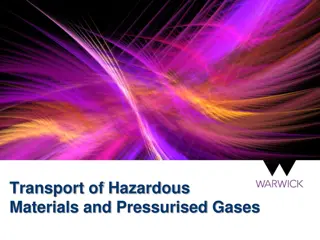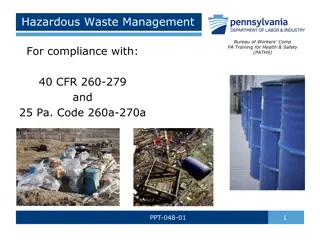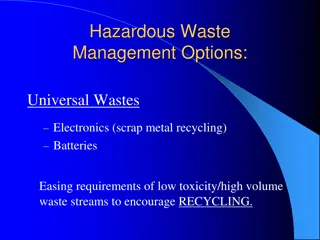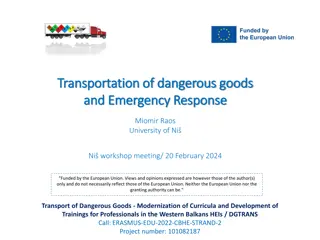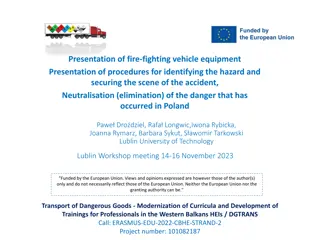Hazardous Materials Safety Guidelines for Room XXX in Building
This document outlines the hazardous materials safety guidelines for Room XXX in the building, highlighting prohibitions on eating, drinking, and smoking, as well as the requirement for safety glasses. It includes contact information for primary and secondary area contacts, the department head, and emergency services. The document also features Hazard Communication Standard (HCS) pictograms and hazards, emphasizing the importance of safety protocols and precautions in handling various hazardous materials present in the area.
Uploaded on Oct 02, 2024 | 1 Views
Download Presentation

Please find below an Image/Link to download the presentation.
The content on the website is provided AS IS for your information and personal use only. It may not be sold, licensed, or shared on other websites without obtaining consent from the author.If you encounter any issues during the download, it is possible that the publisher has removed the file from their server.
You are allowed to download the files provided on this website for personal or commercial use, subject to the condition that they are used lawfully. All files are the property of their respective owners.
The content on the website is provided AS IS for your information and personal use only. It may not be sold, licensed, or shared on other websites without obtaining consent from the author.
E N D
Presentation Transcript
Location: Building Name: Room XXX Hazards / Warnings: Hazards / Warnings Description: No Eating, Drinking or Smoking Safety Glasses Required Oxidizers Pyrophorics Gases Under Pressure Corrosives Organic Peroxides Skin Sensitizer Primary Area Contact: Add Name(s) & Phone Numbers Secondary Area Contact Add Name(s) & Phone Numbers Department Head Add Name & Phone Numbers Other Contact as appropriate (i.e Building Monitor, RSO, other) [modify row as needed] Add Name & Phone Numbers Environmental Health & Safety: 646-3327 (Monday - Friday, 8:00-5:00) 646-3311 (after-hours) 911 Fire/Police/Ambulance:
HCS Pictograms and Hazards Flame Health Hazard Exclamation Mark Carcinogen Mutagenicity Reproductive Toxicity Respiratory Sensitizer Target Organ Toxicity Aspiration Toxicity Flammables Pyrophorics Self-Heating Emits Flammable Gas Self-Reactives Organic Peroxides Irritant (skin and eye) Skin Sensitizer Acute Toxicity (harmful) Narcotic Effects Respiratory Tract Irritant Hazardous to Ozone Layer (Non Mandatory) Gas Cylinder Corrosion Exploding Bomb Gases under Pressure Skin Corrosion/ burns Eye Damage Corrosive to Metals Explosives Self-Reactives Organic Peroxides Flame over Circle Environment (Non Mandatory) Skull and Crossbones Oxidizers From OSHA http://www.osha.gov/dsg/hazcom/hazcom-faq.html Aquatic Toxicity Acute Toxicity (fatal or toxic)
